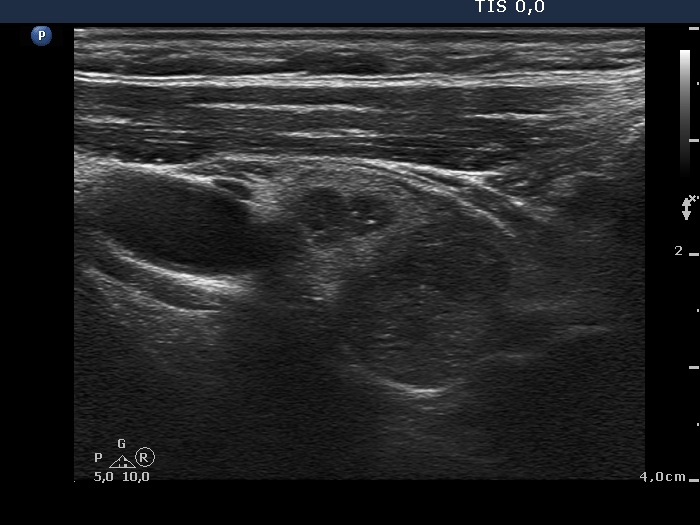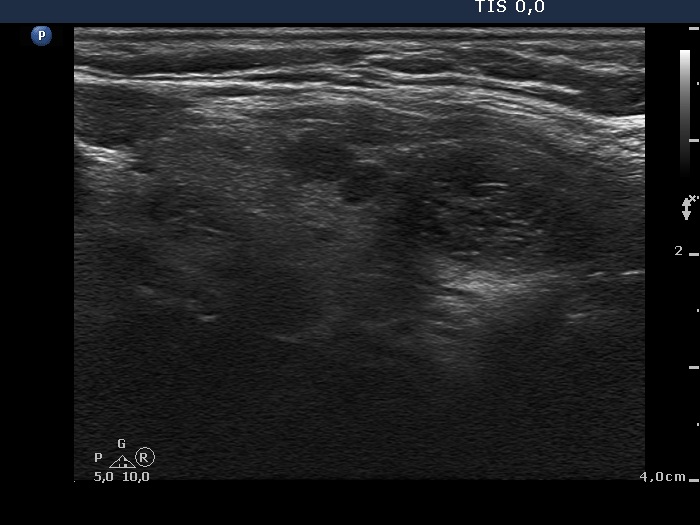Chronic lymphocytic thyroiditis - Case 86. |
|
Clinical presentation: A 57-year-old woman was referred for evaluation of a multinodular goiter detected on ultrasound. She initiated the evaluation because of complaints suggesting hypothyroidism.
Palpation: Both lobes were firm. The left side of the isthmus and the lower part of the left lobe were nodular on palpation.
Hormonal investigation: TSH was minimally elevated (4.89 mIU/L) while FT4 was in the normal range (14.4 pM/L).
Ultrasonography: There were multiple discrete moderately hypoechogenic and hypoechogenic well-circumscribed lesions in both lobes and several less well demarcated hypoechogenic areas, as well.
Cytology was performed from a hypoechogenic lesion in the lower-medial (isthmic) part of the right lobe which presented intralesional hyperechogenic granules and from the lesion in the lower pole of the left lobe. Cytology resulted in Hashimoto's thyroiditis and in benign lesion, right lobe and left lobe, respectively.
Anti-TPO determination was performed and resulted in 119 U/mL.
Diagnosis: Hashimoto's thyroiditis. Subclinical hypothyroidism. Benign lesions which may be or may not be nodules in a pathological sense.
We initiated replacement therapy with 50 microgram levothyroxine and advised beside hormonal follow-up repeat ultrasonography one year later.
The complaints of the patient did not go away and she visited another endocrinologist. He performed aspiration cytology which resulted in follicular tumor. The patient underwent total thyroidectomy. Histopathology disclosed Hashimoto's thyroiditis without any nodules.
Comment. The correct interpretation of those hypoechogenic lesions which are regular in shape and present intralesional hyperechogenic granules is doubtful. They may be hyperplastic nodules or areas of the underlying Hashimoto's thyroiditis. We think that the term nodule has to be avoided in such cases, we used the term "lesion" instead of "nodule".
The less well-demarcated lesions are presentations of the autoimmune disease and not nodules in a pathological sense.





















